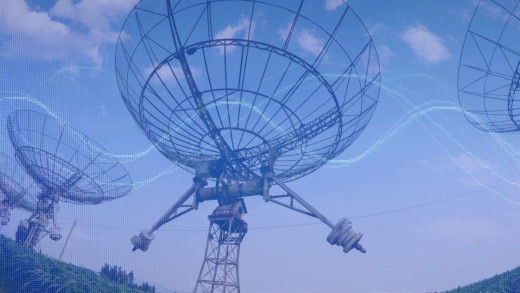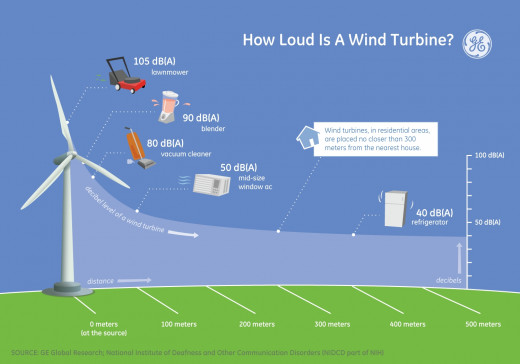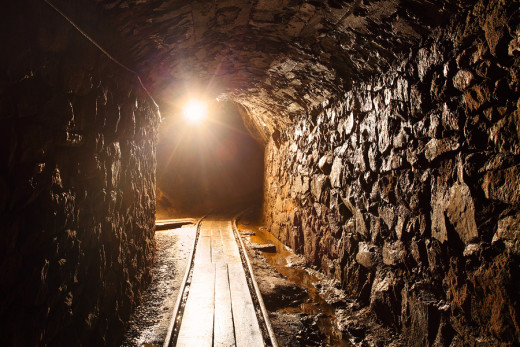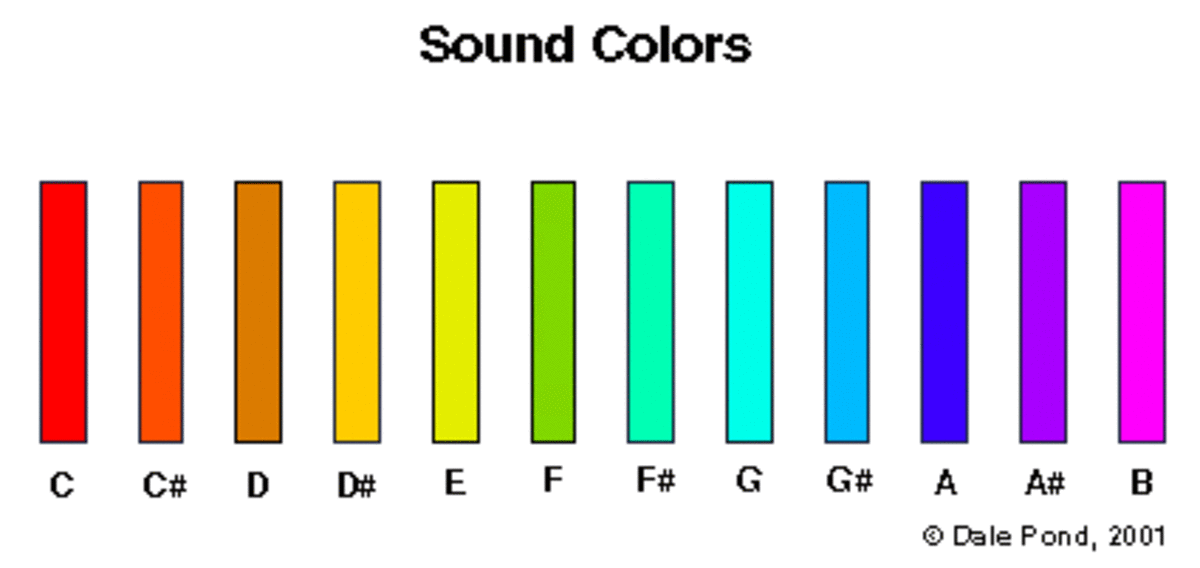- HubPages»
- Health»
- Mental Health»
- Stress Management
"The Hum," the Strange, Eerie Sound Heard to Some All Over the World - What Causes It?








Throughout the 20th and now into the 21st century hundreds of thousands of people worldwide have reported a low frequency pulsating noise which has become known as “The Hum”. Many have described it as sounding like a heavy diesel engine idling in the distance, but, to others, it rises through the frequency range to a higher pitched buzz.
Initially the usual possible causes were investigated including power lines, vibrating gas and water pipes and industrial machinery/processing plants, but were eventually eliminated.
Many of those affected with the noise have sought medical help to see if the noise could be as a result of tinnitus or Ménière’s disease, but mostly nothing has been found.
The “hum” is a phenomenon that has been reported across the world from Vancouver in Canada to Europe, Asia and finally to Auckland in New Zealand.
In Bristol, in the late 1970s, a low frequency noise started which they dubbed the "Bristol hum". The newspapers ran a poll asking readers: "Have you heard the Hum?" Over 900 people said they had. The noise went on for years and the population complained of sleeplessness, headaches, nausea and nosebleeds. “Experts” eventually blamed traffic and factories noise but could produce no verifiable proof. After about two years it just suddenly stopped.
There were other similar cases in Cheshire, Cornwall, Gloucestershire, Lancashire, London, Kent, Shropshire, Suffolk and Wiltshire.
In Largs in Strathclyde a low-pitched drone dubbed the "Largs hum” affected this small coastal town for over 20 years but stopped as suddenly as it started.
Outside of the UK the same type of noise was reported and was variously known as The Taos Hum in New Mexico, the Auckland Hum in New Zealand, the Windsor Hum in Ontario and the Kokomo Hum in Indiana.
The noise is more than just an irritation and at least one suicide in the UK has been blamed on exposure to the hum. The Low Frequency Noise Sufferers' Association reports that the problem is increasing and over two thousand people have phoned its helpline. Currently there are two or three new cases every week, from various parts of the country, which interestingly are generally from females over 50.
A considerable amount of investigation has been carried out concentrating on new high tech developments. The results have been inconclusive and even contradictory with gas pipes, power lines, microwave communication, wind turbines, nuclear waste sites, airports with jet engines left idling, extra-terrestrial activity, even low-frequency military transmissions being suspected. Not unexpectedly this degree of speculation results in the internet becoming full of rumour and outrageous theories.
Dr David Baguley, head of audiology at Addenbrooke's Hospital in Cambridge estimates that in about a third of cases there is some environmental source that the sound could be attributed to. However most of the time, there is no external noise that can be recorded or identified to back this assumption. His own theory - based on years of research - is that many sufferers' hearing has become over-sensitive concentrating the mind on certain frequencies of sound which it perceives as a threat.
Many people in my own area suffer with this noise and if I look around we have a large early warning station, main micro-wave communication masts, a major under-water military establishment and several airports, none of which, of course, would admit to anything, even if it were true.
If we look at the reported statistics relating to “the hum” we find that approx. 5% of the world’s population have heard it and have reported the following reactions to exposure to it.
Insomnia, Pounding Head, Difficulty concentrating , Dizziness, Headache , Burning Skin, Tension, Pins and Needles , Muscle Spasms, Heart Palpitations, Nose Bleeds, Eye Strain , Ear Pressure, Nausea and Fatigue, Panic and Desperation.
Ear plugs or hearing protectors do not help and in fact only seem to exaggerate the problem, suggesting that the source possibly makes the whole body vibrate at a frequency of around 10 MHz upwards, which is lower than the average person can hear. High quality microphones cannot record the sound and more often than not other people in the immediate vicinity can hear nothing.
The fact that the hum will suddenly start and affect a very localised area then, after an indeterminate period, suddenly stop, bears out the fact that it has nothing to do with the individual's hearing and must emanate from an external source.
I wish I could bring this article to a conclusion and give you a rational explanation for “the Hum” but I can’t. The theories range from motorway noise to the spiritualist lady who earnestly told me it was the moans of the tormented souls in hell.
As you can see the possible explanations are very open and if you have any ideas you would like to share please do so through the comments section below.
Updated information
October 2013 - Just recently there has been reports of a low frequency noise in Hythe and
Dibden Purlieu area of Hampshire. The number of complaints from residents who say they are being disturbed at night by a low-frequency noise has tripled.
New Forest District Council and the Environment Agency say they still do not know what is causing the drone that has been going on for several months.
In addition more than 30 complaints, per week, mainly from people in Hythe, Holbury and Fawley, have been received by the council.
As has been previously mentioned some reports have suggested it could be calls from mating fish. But Davina Miller, from New Forest District Council, said could not identify the noise but added it was unlikely to be the mating of midshipman fish.
She said: "A number of suggestions have been put forward by the public which have included dredging in Southampton Water, noise from the Fawley refinery or other industrial processes along the waterside, power cables, circling aircraft or military sources. "At the moment we are keeping an open mind as to the source of the noise,particularly as low frequency sound can travel considerable distances.
An Environment Agency spokeswoman said: "It could be anything. We can't set anything in stone just yet as we're still eliminating all the possibilities."
The council has been conducting out-of-hours monitoring, but did not detect the sound because background noise levels in the area were too high.
Ms Miller said monitoring equipment would now be deployed at a number of
properties over the forthcoming weeks.
Everybody who has complained will also be asked to keep a diary to record the dates and times they are affected by the noise.
Ms Miller said a small number of complaints had been received from people
as far away as Lymington, Marchwood, Totton, Shirley, Swaythling and
Sholing.
Some people believe that the noise is constant, but is particularly noticeable at night. Others say it occurs from late evening until early morning.
Many of these noises tend to fade away or become less noticeable but "the hum", if anything has become stronger and is affecting a greater cross section of people, the world over.
This phenomenon continues to baffle the best brains with additional recent reports in 2015.
Woodland, a village in County Durham, is the latest place to fall victim to the strange vibrating noise, which sounds like a constant humming growl, described by a 53 year-old bathroom installer who lives in the village. He said that he and his wife hear it in bed, downstairs in the house and outside in the garden, but adjoining residents can hear nothing.
The feeling is that it may have something to do with close by disused coal mine shafts, dozens of which riddle the area. Durham County Council says it is planning to send someone with sound monitoring equipment to the village to investigate if it is a natural vibration echo amplified by the passages or, as unlikely as it may sound the low pitched moans of a supernatural haunting.
It’s interesting to note that certain objects such as fans, compressors etc. have recently been identified as the cause, but when these items are switched off the hum does not stop.
August 2016 - Recently oceanographers, having been confused for decades, feel that a new study may have found an explanation. An article published in the online journal Geophysical Research Letters has proposed a new cause behind the "ringing": ocean waves. According to research carried out by oceanographer Fabrice Ardhuin, of the National Center based in Brest, France, the microseismic activity is caused by the collision of ocean waves, which in turn create mini seismic waves.
They used computer models of the wind, ocean and seafloor to pinpoint the exact type of waves causing the incessant "hum". Although the researchers found that colliding ocean waves create some seismic activity, it was mostly the movement and pressure of giant, slow-moving waves that lay behind the Earth’s constant vibrations. The study found that these waves could generate seismic waves with a frequency of 13 to 300 seconds: the time it takes for the ripple to travel all the way down to the seafloor. The findings indicate that the waves travel deep into the planet’s mantle -- possibly even going as far as the Earth’s core.
Migraine help
- Migraine - Prevent or stop the crippling attacks using essential oils and herbs.
Migraine is a crippling headache causing visual disturbances and sickness. It can be helped by the use of essential oils and other herbs. There are several triggers to a migraine attack ranging from food, stress and the environment.
Tinnitus and Meniere's disease
- Tinnitus and Ménière's - You can reduce noise and effects by using safe natura
Tinnitus or noises in the ear can be very irritating. Meniere’s is similar only includes vertigo. Help using essential oils, herbs, vitamins and white noise devices can be very effective to remove sounds and allow more normal hearing.
Strange story of Alternative 3
- Alternative 3 - What is the Government not telling us about the future of life on this planet?
In 1977 a television programme named Alternative 3 was broadcast allegedly exposing a combined USA/Russian plan to ship the best brains via a moon base to a new colony on Mars. Later it was claimed to be a joke but many feel it is either fact or clos
Strange unexplained vision seen on WW1 battlefield
- The Angels of Mons - Miracle or Mass Hysteria
During the Great War 1914-1918 an incredible apparition of the Angel of The Lord appeared on the battlefield at Mons in Belgium and saved the British troops from annihilation.
Imaginary friend or previous life
- Imaginary friend or a previous life - can you decide
Who were our imaginary friends as a child ? were they just the result of an overactive imagination or were they perhaps our previous existence.
The Hum
Do you think you can hear "The Hum"
© 2012 Peter Geekie








